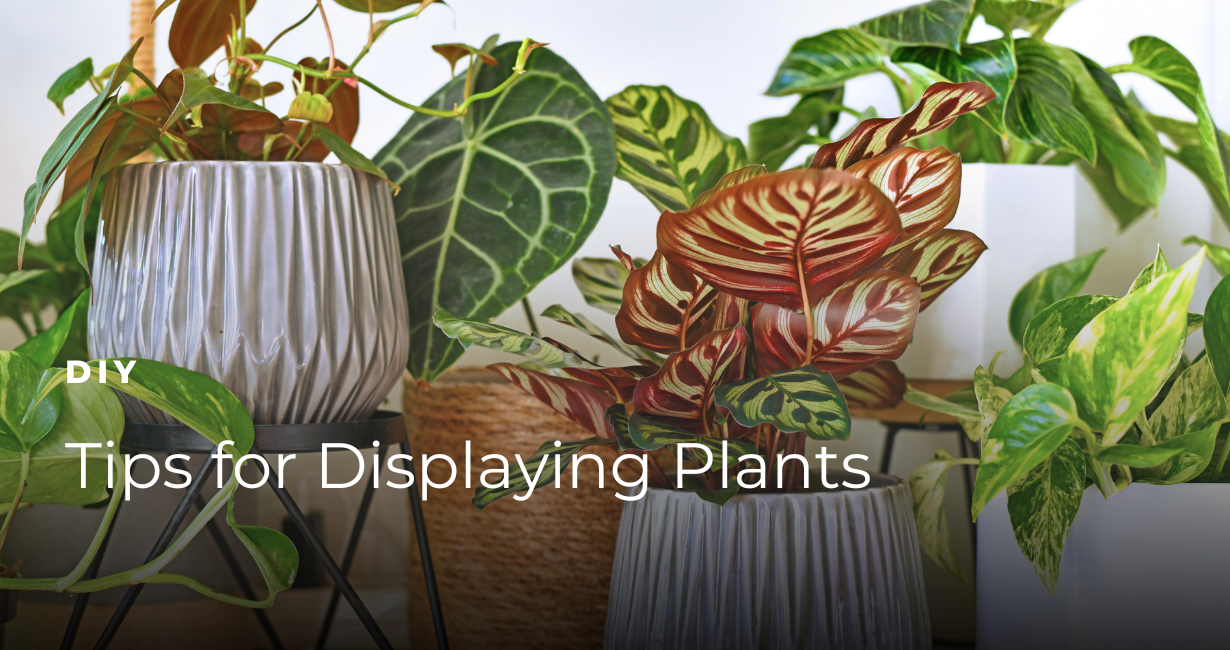Tips for Displaying Plants
Posted by Marketing on Friday, July 7th, 2023 at 11:05am.

Whether you’re a first-time homebuyer or a seasoned homeowner, the way you decorate your house can transform it into a true home. We’re committed to matching Middle Tennesseans with the property of their dreams, but it’s up to you to bring that space to life.
Wall art and décor aren’t the only things that can add personality to your home. Indoor plants have the ability to breathe a freshness and vibrancy into any room and they’re easier to decorate with than you might expect.
Today, we’re going to share our top tips for displaying plants. Read on to get inspired and embrace your own indoor gardener.
Create Texture and Variety
One of the most exciting things about decorating with plants is that you’re practically unlimited when it comes to shape, size, and color. The large and glossy fiddle leaf fig tree provides height while the squat anthurium provides a dazzling splash of pink or red. Vining plants like pothos can trail across your bookcase while succulents can fill in those little nooks and crannies.
When displaying plants at home, don’t stick to one variety. By decorating with a mix of plants, you’ll create more visual interest and texture.
Read Up on Growing Conditions
Nothing is more discouraging than purchasing several new plants only to discover that they’re struggling within a matter of days or weeks. If you can’t seem to keep houseplants alive for long, the problem may be that you’re not providing the optimal growing conditions.
When you’re deciding where to place the newest addition to your indoor plant collection, make sure that you know where they’ll thrive. For example, low-light plants such as snake plants don’t need to sit in that south-facing windowsill and can adapt to dim spaces. Jade plants, on the other hand, need to soak up the sun.
New to taking care of houseplants? If so, start with a few low-maintenance plants (hint: leave the orchids at the nursery for now!) to get into the swing of indoor plant care. You can even sprinkle in a few fake plants to get the natural look without all the upkeep.
Fill Vertical Space
Even if you don’t have cathedral ceilings, you can create the illusion of height in your home by making use of vertical space. Hanging plants offer a great opportunity to draw the eye upward while leaving lower shelves and surfaces open for books, framed photos, and other décor.
Use S-hooks to attach your hanging planters to exposed beams or screw hook hangers into ceiling joists. Always make sure that the hooks you use are capable of bearing the weight of both the plant and the planter. If you already have decorative pots that you love, slip them into macrame holders, which are relatively inexpensive to make or buy.
Embrace Asymmetry
Manmade objects often provide a uniformity of shape, like the perfect curve of a wall clock or the exact right angles of a picture frame. While some plants have a predictable growing pattern, they still create uniquely organic and asymmetric shapes as they grow. Why not embrace that asymmetry in your styling, as well?
Putting a lemon tree on one side of your dining room doesn’t mean you need a lemon tree on the opposite side. Group plants in odd numbers and make neighbors of different varieties. Asymmetrical arrangements are an extension of the organic shapes your plants create and can give your home an air of playfulness and whimsy.
Think of Decorative Pots as Décor
When you head to your local nursery, you’ll find that most plants are sold in either plain terra cotta planters or simple plastic containers. While the former can go right onto a shelf or windowsill as is, the latter can’t. You’ll need to purchase planters for these exposed containers, and this is a great time to consider your interior design style.
You can find pots and decorative planters at most home goods stores, online shops, and even some nurseries. Make sure that the patterns, colors, and finishes you choose will align well with your other design choices, including furniture styles and paint colors.
If your decorative pots have drainage holes drilled into the bottom, you will also need to purchase saucers that will catch any water that drains from the soil. If your decorative pots do not have drainage holes, simply keep your plant in its plastic nursery liner and pop it in and out of its outer ceramic pot for watering, allowing excess water to drain away from your plant’s root system each time.
The Takeaway
Houseplants make the perfect addition to any home, infusing your space with life and personality without contributing to clutter. These tips for displaying plants should help you get started on creating your own indoor oasis. Happy planting!







